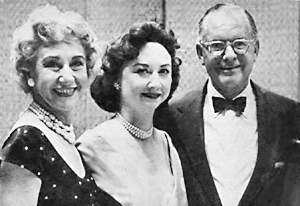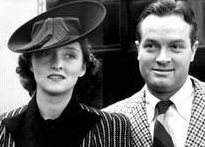
|
| (r to l) Arlene Francis, Dorothy Kilgallen, Bennett Cerf (Sorry, we couldn’t find Kilgallen’s address or phone number) |
There are three types of vintage publications we can’t resist giving at least a quick browse: retail catalogues, school yearbooks, and telephone directories.
So we were delighted to learn that the good folks at the New York Public Library, bless their hearts, recently posted the 1940 phone books for each of the five boroughs of New York.
If you grew up in NYC or your parents or grandparents did, you’ll have fun tracking them down, but even if, like us, you have no connection to NYC that dates back seventy-plus years or, heck, no family connection whatsoever to the Big Apple, this is still a resource you can enjoy, if only for the joy of perusing the telephone exchanges.
We’ll compose a post one day about our affection for these magical words, but today suffice it to say that telephone numbers that begin not with mere digits but with melodic vocables such as Trafalgar, Whitehall, Butterfield, and Bogardus evoke bygone eras like few other verbal artifacts can.
Then there are the advertisements. We don’t know whether there were yellow pages-style business directories for New York City in those days, but these white pages include plenty of ads: Tyson Sullivan theatrical ticket service, Underwood Typewriters, American Pencil Company, Elfinbein’s Baking Corporation: Bakers of Cakes, Pastries and Pies Since 1918.
Then there’s the celebrity spotting. You might have known that artist Edward Hopper lived and worked at 3 Washington Square—that info’s relatively common knowledge—but did you know his phone number was SPring 7-0949?
We’re tempted to punch in those seven digits; we’re willing to bet the current holder has no idea that America’s greatest painter (in our humble opinion) once took calls at that number.
Then there’s What’s My Line? doyenne Arlene Francis. In 1940, she was a working actress, having appeared in eight Broadway shows and a movie or two. She was married to one Neil Agnew, who worked in the sales department for Paramount Pictures, and they lived at 320 Park Avenue. Their phone number was WIckersham 2-9486. They had separate listings in the phone book, which was probably a good thing, as they were to be divorced just five years later.
Arlene lived just a short stroll away from Bennett Cerf, who would be her fellow What’s My Line? panelist and in 1940 was already the publisher behind Random House. Cerf’s phone number was PLaza 3-0230, and he lived at 20 East 57th Street, just six blocks away from Francis. One wonders if they were yet acquainted in 1940.

 The lovely and talented
The lovely and talented 